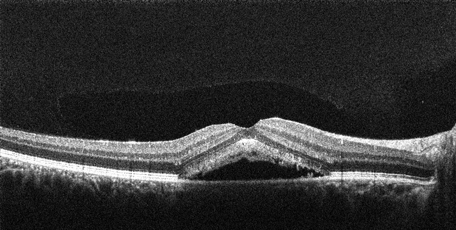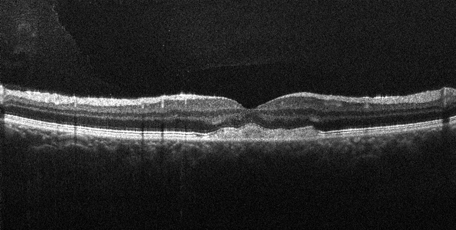What is Central Serous Chorioretinopathy?
Central Serous Chorioretinopathy (CSCR) is a condition caused by fluid leakage at the macula. It is usually idiopathic (which means that no obvious cause can be found) but it has been linked with risk factors such as systemic hypertension (high blood pressure), systemic and inhaled steroids and high levels of stress.
CSCR is associated with dysfunction in the Retinal Pigment Epithelium (RPE). The RPE is beneath the retina and one of its many functions is to keep fluid from leaking out of the choroid (the blood vessel layer under the retia) into the area under the retina. CSCR develops when fluid from the choroid passes through the dysfunctional RPE to accumulate underneath the retina.
What are the symptoms?
Symptoms often include acute blurring of central vision and distortion (straight lines appear wavy). There may also be a change in colour vision as the macula is the part of the retina also responsible for colour vision.
Who is at risk?
CSCR is most common in young to middle aged adults ranging from 30-50 years of age, with men being more prone to the condition than women. However, CSCR may occur at any age.
How is it diagnosed?
Dr Hilford will undertake a dilated examination of your eyes and tests such as optical coherence tomography (OCT) and/or fluorescein angiography will be required.
What are the treatment options?
Most acute CSCR cases spontaneously resolve, and full recovery can be expected within one to six months. Patients with non-resolving CSCR may require treatment and Dr Hilford will discuss treatment options.







